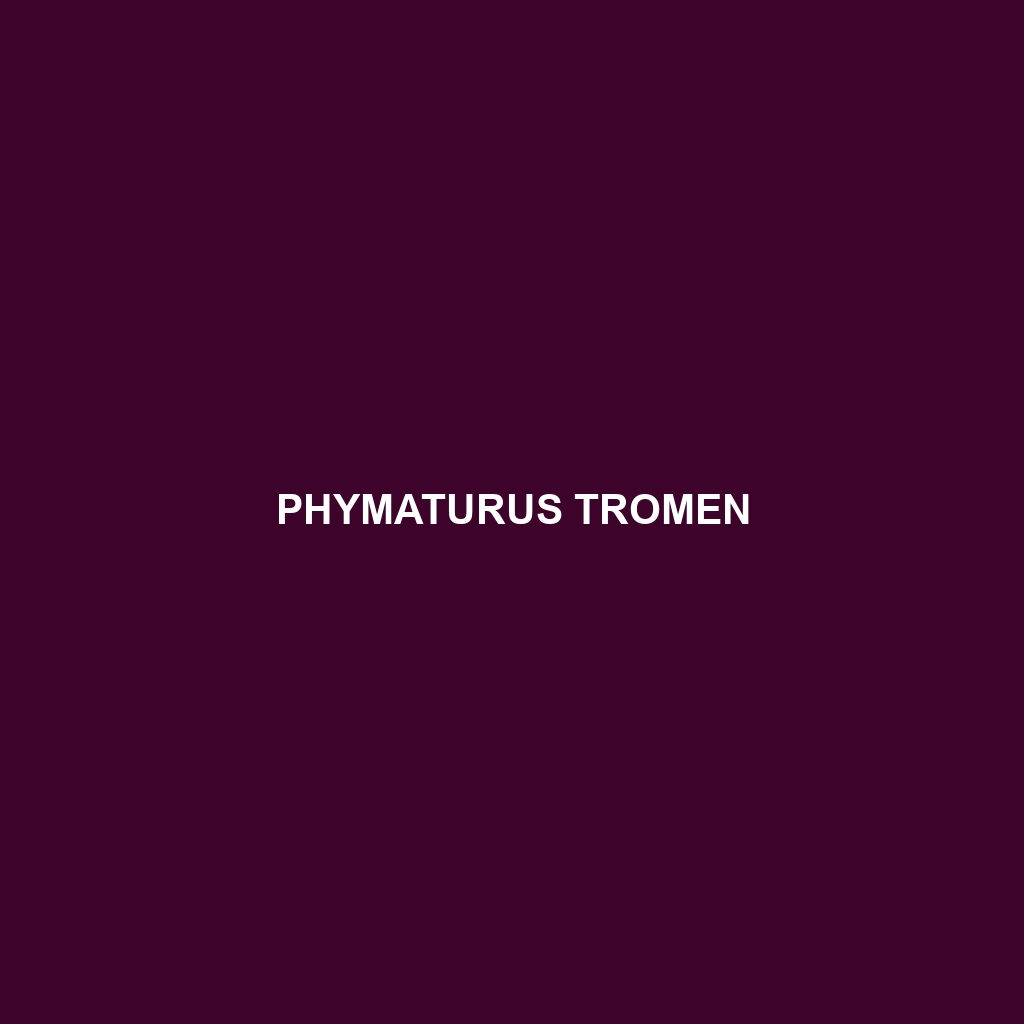Common Name
Phymaturus tromen
Scientific Name
Phymaturus tromen
Habitat
The Phymaturus tromen, commonly known as the Tromen lizard, is primarily found in the temperate forests and rocky shrublands of Patagonia, specifically in areas surrounding the Parque Nacional Tromen in Argentina. This region is characterized by its diverse plant life and varied climatic conditions, which include cold winters and mild summers. The Tromen lizard thrives in environments where it can utilize crevices in rocks for shelter and remain hidden from predators. These lizards are adapted to the cooler, moist climates typical of temperate regions, making them a fascinating species for study. They prefer sites with plenty of sunlight, which is essential for their thermoregulation, yet they also require adequate cover from vegetation or rocky outcrops for safety.
Physical Characteristics
The Phymaturus tromen exhibits distinct physical features that set it apart from other lizard species. Typically, this lizard reaches lengths of 15 to 25 centimeters. Its body is robust with a thick tail, which helps in balance and fat storage. The dorsal coloration ranges from olive green to brown with darker spots that provide excellent camouflage in its natural habitat. Its ventral side is lighter, often a cream or pale yellow, which aids in reflecting heat. Unique to this species is the presence of pronounced, granular scales that give a rough texture to its skin, making it more resilient to environmental conditions. The Tromen lizard also features a broad head with distinct, well-defined jawlines, providing it with a strong bite for its feeding needs.
Behavior
The Phymaturus tromen exhibits both diurnal and nocturnal behaviors, making it adaptable to various environmental conditions. Typically active during the day, these lizards are known to bask in the sun to regulate their body temperature. Socially, they are territorial, often showcasing unique displays of dominance, such as push-ups or head bobs to ward off competitors. Their mating rituals involve elaborate courtship displays, where males often engage in colorful dances and show off their bright patterns to attract females. Although not known for long-distance migrations, they can exhibit localized movements in search of food or suitable nesting sites.
Diet
The Phymaturus tromen is primarily an insectivore, feeding on a variety of small insects and arthropods. They have been observed consuming grasshoppers, beetles, and ants, often foraging among leaf litter and rocky crevices. Their dietary habits can shift slightly depending on availability, but they play a crucial role in controlling insect populations in their ecosystem. Supplementing their diet with plant materials such as flowers and fruits, they are also known to be opportunistic feeders, taking advantage of any seasonal food sources.
Reproduction
Reproductive activities of the Phymaturus tromen typically occur during the warmer months, with mating seasons peaking in late spring through early summer. Female lizards demonstrate a complex courtship behavior, which includes a series of displays to attract potential mates. After mating, the gestation period lasts about two to three months, culminating in the female laying a clutch of eight to twelve eggs in sandy or loosely packed soil, where the young are safeguarded from predators. Upon hatching, the hatchlings are relatively independent and must quickly adapt to the challenges of their environment, with parental care being minimal.
Conservation Status
Currently, the Phymaturus tromen is classified as Vulnerable according to the IUCN Red List. The primary threats to this species stem from habitat loss due to human encroachment, agricultural expansion, and climate change affecting their natural habitats. Several conservation efforts are underway to protect the unique ecosystems of Patagonia, including habitat preservation and research initiatives designed to better understand the ecology of this fascinating lizard. Continuous monitoring and habitat restoration are critical for ensuring the survival of Phymaturus tromen.
Interesting Facts
One of the most intriguing aspects of the Phymaturus tromen is its ability to adapt its foraging techniques based on the time of day. Their nocturnal foraging helps them avoid daytime predators, whilst their vibrant colors serve a purpose beyond camouflage, as they play a role in thermoregulation and social signaling. These lizards have been known to exhibit seasonal color variations that can change with temperature fluctuations or background elements of their habitat, providing further adaptations to thrive in varying conditions.
Role in Ecosystem
The ecological role of the Phymaturus tromen is significant, as it serves both as a predator and a prey species within its environment. Their dietary habits help to maintain the balance of insect populations, preventing any one species from overwhelming the ecosystem. Additionally, as prey for larger predators, they contribute to the food web. Their activities within rocky crevices also aid in the aeration of soil and the dispersal of seeds through their droppings, further enhancing the health of their ecosystem.
